17 Sustainable Ways to Make Your Garden More Eco-Friendly
Support the environment and local wildlife with these sustainable gardening practices.
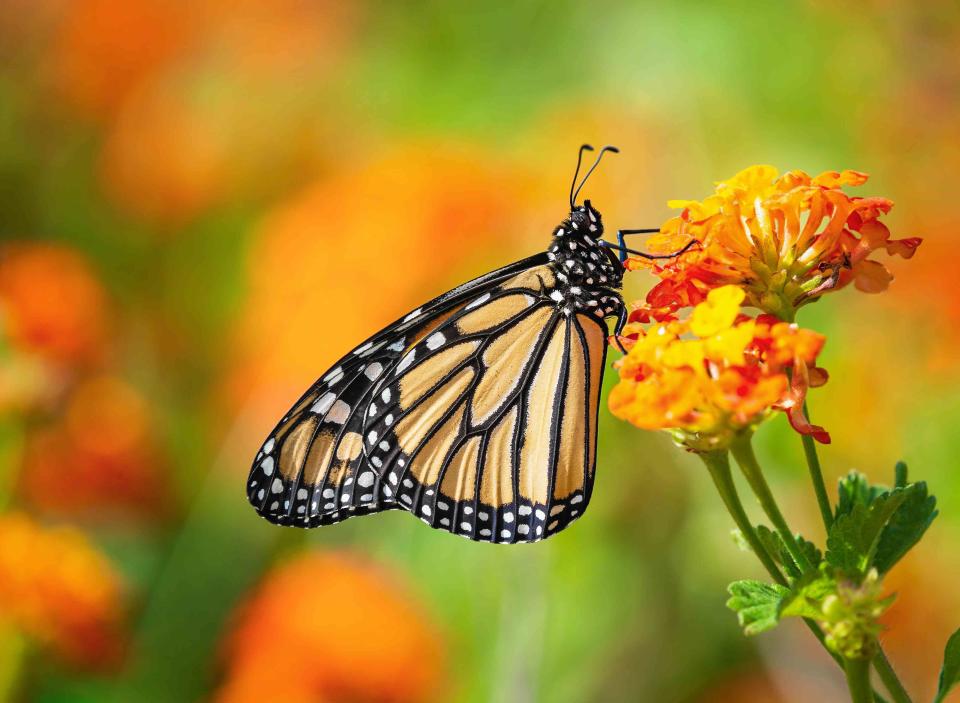
leekris / Getty Images
A garden has many benefits—it boosts curb appeal, supports local wildlife, encourages you to spend more time outdoors, and provides you with nutritious food. But if you're not careful, gardening can be tough on the environment due to things like high water usage, pesticides, and soil erosion. If you want to make your garden more eco-friendly, there are many easy adjustments you can make to support the environment and improve biodiversity. From the things you grow to the way you feed and water your plants, we're sharing a few expert-approved ways to make your garden more sustainable.
Related: 12 Alternatives to a Traditional Grass Lawn—and Why You Should Consider Making the Switch
Grow a Grass Alternative
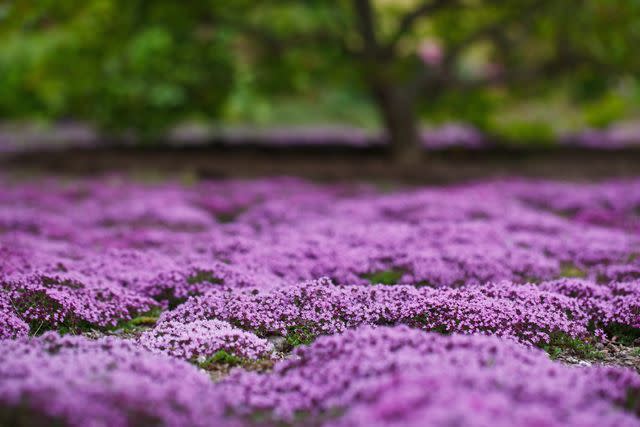
Laszlo Podor/Getty Images
While turf grass is attractive to look at, it has little to no ecological benefits. "With no flowers and a shallow root system, nonnative turf grasses like Kentucky bluegrass (Poa pratensis) offer no benefits to wildlife or the environment," says Leah Brooks, instructor and public programs coordinator at Mt. Cuba Center. "Support your local ecosystem by shrinking your lawn and replacing the monoculture of grass with native plants instead."
Related: 12 Alternatives to a Traditional Grass Lawn—and Why You Should Consider Making the Switch
Compost
Composting is the practice of allowing organic waste, like food and yard scraps, to decompose rather than throwing it in the trash. "The mixture that results from this process is called compost and it can be used as fertilizer when gardening," says Brooks. Adding compost to your soil has many benefits, including reducing soil erosion, improving soil structure, and increasing the population of good microorganisms.
Related: 10 Composting Tips That Will Keep Your Soil Healthy, According to Martha’s Head Gardener
Use a Reel Mower
If you still have turf grass in your yard, mow it with a reel mower or electric mower rather than a gas mower, which produces carbon and smog-forming pollution, says Linda Langelo, horticulture specialist at Colorado State University. According to the Environmental Protection Agency (EPA), a single gas-powered lawn mower emits as much pollution in one hour as driving a car for 45 miles.
Grow Native Plants
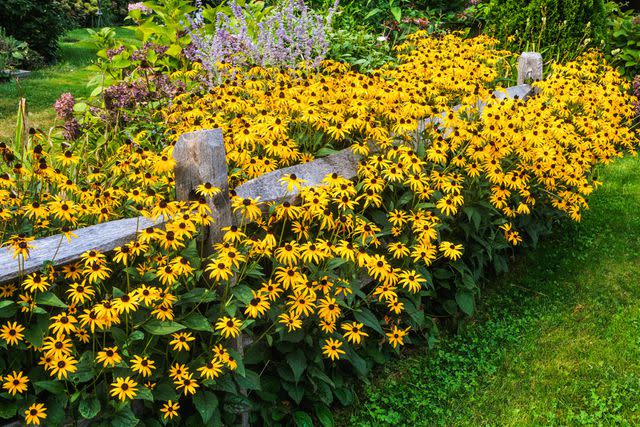
Growing plants native to your area is easier on you and the environment. "Native plants have co-evolved alongside local wildlife and provide critical ecological functions," says Brooks. "They have adapted to thrive in certain conditions, and placing the right species in a suitable location will eliminate the need for excess fertilizer, soil amendments, and watering."
Tips
To discover which plants are native to your area, enter your zip code in the Native Plant Finder tool from the National Wildlife Federation.
Use Solar Lights
Solar lights utilize the power of the sun to function, which reduces energy consumption and light pollution, says Mary Phillips, head of native plant habitat strategy and certification programs at the National Wildlife Federation. Additionally, solar light may have a longer lifespan than traditional bulbs, leading to reduced waste. Where possible, though, keep lights off entirely to support local wildlife.
Related: 10 Best Outdoor Solar Lights to Illuminate Any Part of Your Landscape
Install a Drip Irrigation System
Drip irrigation systems provide water directly to the roots of your plants, which saves water and minimizes runoff. "You can install a drip system yourself or hire a professional for a larger area," says Misti Mathis, Co-owner of Harvest Gold Organics.
Plant Ground Covers
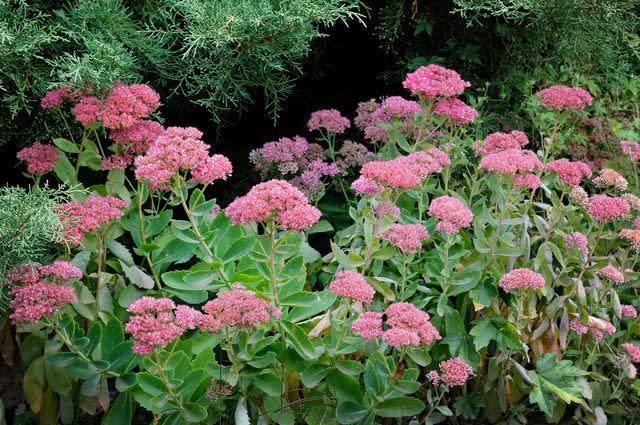
Growing ground covers, like stonecrop, creeping thyme, and dichondra, in place of grass is a great way to make your garden more sustainable. "Ground covers help prevent soil erosion and minimize evaporation from the soil surface, helping to retain moisture," says Kelly Funk, President Jackson & Perkins. "Ground covers can also suppress weeds as they form a dense cover on the soil." Additionally, ground covers provide habitat and food sources for wildlife and beneficial pollinators.
Related: 12 Ground Cover Plants That Will Fill in Negative Space and Suppress Weeds in Your Garden
Use a Hose Over a Sprinkler
A drip irrigation system can be expensive to install. For a more affordable alternative to sprinklers, simply use your hose or a watering can. "A hose gives you more control over how long the water is on and where the water is delivered." says Langelo. "By targeting water at the plant’s base and waiting for it to pool, we are watering more effectively. After it pools, wait until that drains and do it again until you know the water is at the root zone."
Related: 9 Ways to Save Water in Your Yard and Garden
Avoid Tilling
While tilling the ground before planting may seem like the right place to start, it's not necessary in most cases and can even be harmful to your soil. "Tilling breaks up the soil structure, which increases the likelihood of soil erosion and surface runoff," says Brooks. "Churning the soil can also bring dormant weed seeds up to the surface, enabling them to germinate."
Related: Stop Digging: No-Till Gardening Is the Low-Maintenance Technique You've Been Looking For
Save Your Seeds
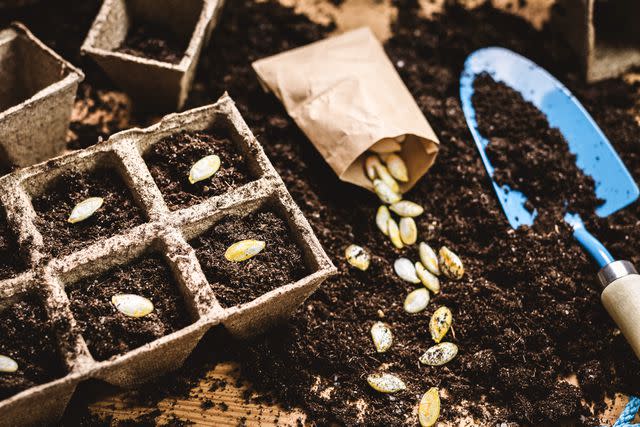
Zbynek Pospisil / GETTY IMAGES
Collect seeds from the plants growing in your garden and save them for sowing next year. "Seed saving can be beneficial to protect crops against diseases and helps the plant become better adapted to its growing conditions, making it more dependable," says Carrie Spoonemore, co-creator of Park Seed's From Seed to Spoon app. "By growing a crop that is well-adapted to your area, you will likely increase the crop’s yield." Store your seeds in a labeled, airtight container and keep them in a cool, dry location.
Use Organic Fertilizer
Avoid over-fertilizing your garden, even if you're using an organic option. Runoff of excess fertilizers from yards into lakes, ponds, and streams can result in a harmful imbalance of nutrients. "This process, called eutrophication, occurs when certain nutrients like nitrogen and phosphorous become excessively rich in a body of water, and cause rapid growth and surplus of plant life," says Brooks. "The plant growth leads to a surge in microorganisms, which consume oxygen at high rates and create dead zones. In these zones, dissolved oxygen levels are so dangerously low that aquatic animals like fish cannot survive."
Use a Rain Barrel
Using a rain barrel allows you to make the most of rainwater and conserve it for other uses. "A rain barrel helps reduce flooding and protects the landscape from runoff," says Funk. "Collecting rainwater is also an excellent way to prepare for droughts or dry spells. Watering your garden with rainwater is a highly effective way to make your gardening practices more sustainable."
Grow Your Own Food
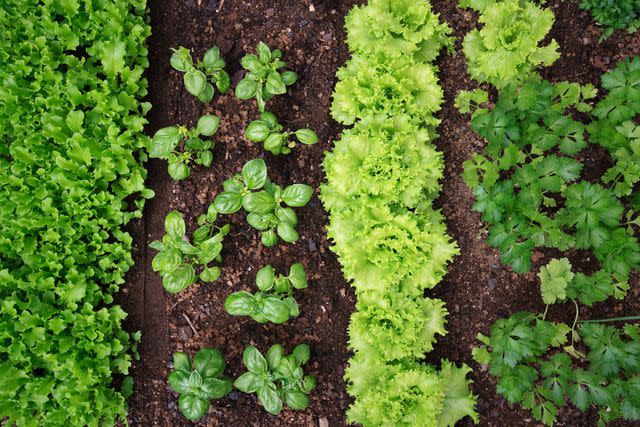
Growing your own food benefits you, as well as the environment. "Growing fruits, vegetables, and herbs in your garden helps reduce carbon emissions in the atmosphere, reduces the use of pesticides and other chemicals, and reduces the amount of plastic and packaging used in commercial growing," says Spoonemore. "When you grow your own food, you also reduce food waste if you only harvest what you need."
Related: How to Plant a Sustainable Food Forest That Yields Layers of Produce
Repurpose Garden Waste
There are other ways to repurpose garden waste beyond composting. "When you repurpose garden waste you lessen your footprint on the environment and minimize what ends up in landfills," says Langelo. Some ideas include: using un-treated lumber to make raised beds, using old bricks to make a fire pit, and using pea gravel as mulch.
Grow Plants That Deter Pests
Implementing pest management strategies minimizes the need for pesticides and insecticides used on plants, says Langelo. To do this, grow plants that naturally deter pests, like herbs and flowering plants like marigolds. "Marigolds ward off aphids, thrips, bean beetles, tomato hornworms, mosquitoes, and more," says Langelo. "If your soil has many nematodes, then plant marigolds and they will help reduce them without the use of chemicals."
Related: 12 Plants That Repel Mosquitoes, According to Gardening Experts
Grow Pollinator Plants
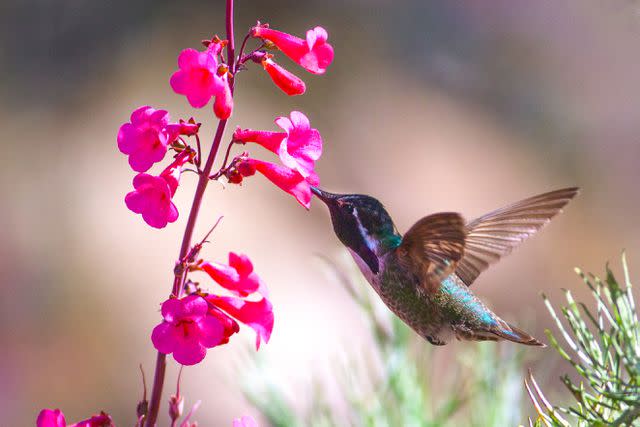
epantha / GETTY IMAGES
Welcome birds, bees, and butterflies to your landscape by growing pollinator plants. "The more diverse the selection of pollinator plants, the healthier the ecosystem," says Langelo. "When you create a diversity of plants (native plants especially), you create a habitat rich in nectar and pollen-producing plants that attract bees, butterflies, and birds and a host of other pollinators such as moths, wasps, dragonflies, native bees, insects, and flies." This supports biodiversity and increases crop yields.
Related: 15 Pollinator Plants That Will Attract Birds, Bees, and Butterflies to Your Garden
Mulch Your Beds
Mulching your garden beds has a myriad of eco-friendly benefits. "It an important and easy way to suppress weeds, reduce water loss, protect and shade the soil, and add nutrients to your garden," says Brooks. "Look for natural mulches like pine straw, shredded bark, or dead leaves. Avoid dyed mulches as they do not break down extremely slowly and can contain harmful chemicals and contaminates that leach into the soil."
Read the original article on Martha Stewart.

